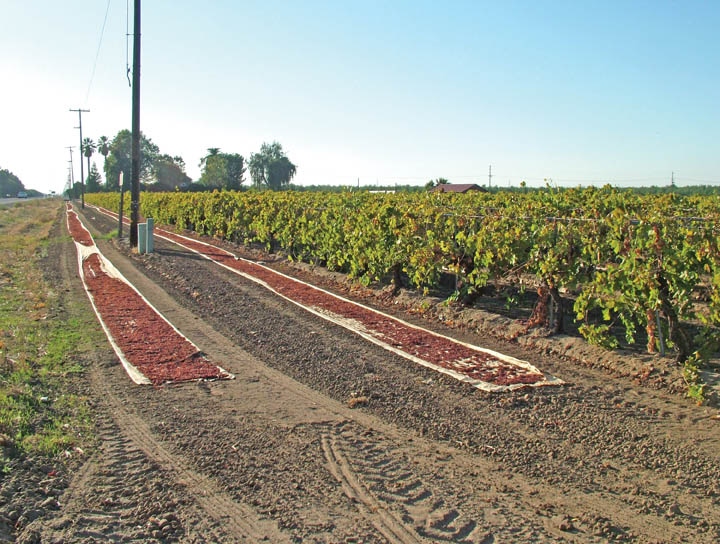
Fresno County, Calif., raisin grape grower Dwayne Cardoza likes the way his vines are progressing. “Vine growth is a little ahead of schedule. We’ve just finished bloom and everything is really healthy,” he says. “The vineyards around the Fresno area are just beautiful.”
However, it’s a long way to harvest and water supplies for the season are a major concern, especially since he’s already seen 100-degree temperatures and it’s only May. Labor availability and the raisin market outlook are concerns he ranks right up there with water.
A Raisin Bargaining Association director, he has been growing raisin grapes in the Easton, Calif., area for the past 34 years. Dwayne Cardoza Ranches, Inc., includes about 200 acres of organic vineyards. About half the grapes are DOV varieties, which he dries on the vine. The rest — Selma Pete, Fiesta and Zante currants — are dried on trays.
Several of his ranches are in irrigation districts where he expects to receive only about 20 percent of his allocation of surface water. Last year, these ranches got about 40 percent of their surface water allotments.
“Because there’s very little ditch water this year, everyone is taking water out of the ground,” Cardoza says. “We’re not sure the aquifers will support the demands this year.”
Labor availability has become a habitual problem. Last year, an extended harvest period along with cooperating weather enabled growers to get their grapes off the vines and dried, despite a labor crunch.
“The tree fruit guys are already short on labor this year,” Cardoza says. “And, with all the grapes developing faster than usual this season, more grapes will probably be ready to pick in a shorter time frame. That would require more workers to get the grapes off the vines and dried. “
This year’s crop is shaping up to be a nice size. However, growers doubt it will be a bumper crop. It might not be enough to fulfill all buyers’ orders.
Typically, California’s packers sell about 320,000 to 330,000 tons of raisins a year, Cardoza notes. Last year, growers made only about 294,000 tons of raisins. “However, if you add the carry-in from the previous marketing year, we should have enough raisins to meet demand for the current marketing year,” Cardoza says.
Murky future
He credits packers for their role in meeting obligations to buyers. As of May 8, he notes, domestic and export shipments were down just 4 percent from a year earlier. ”That’s remarkable,” he says, “As a result, raisin prices should stay at least where they are for the rest of this marketing year because of the fantastic job packers are doing.”
However, the future beyond this year is murky. Following last year’s harvest, California’s growers tore out roughly 19,000 acres of vineyards, replanting most of them to nut trees, he reports. “About 14,000 to 15,000 of those acres had been growing Thompson seedless and other raisin varieties,” Cardoza says. That equates to 30,000 tons of raisins no longer available for the marketplace. This year’s seemingly big raisin crop could also get much smaller since wineries are out right now contracting to buy Thompson seedless and other raisin-type varieties.
Fortunately, dry spring weather has minimized powdery mildew pressures in the vineyards. Continued hot, dry weather, would increase the likelihood of some mite flare-ups in the last half of May, Cardoza adds.
Hot days and cool nights along with a thunderstorm at the 50 percent bloom stage produced quite a bit of shatter. “The bunches that are there are a little on the small size but look nice,” he says. “They won’t have big shoulders. However, it’s hard to say what the crop size is likely to be. We really won’t know until we start putting grapes on the ground.”
If you would like to read more about California grape growing, subscribe to GrapeLine, the exclusive electronic newsletter sponsored twice a month by Chemtura. To sign up, go to the Newsletter Sign Up box on the Western Farm Press home page (westernfarmpress.com). It’s free and e-mailed the second and fourth weeks of each month from March through October.
More from Western Farm Press
Agricultural pioneers battling water scarcity
Wine skeptic takes on climate change report
Honey bee decline all about colony stress
7 big questions for the farm bill debate
Amazing day in short life of worker bee
About the Author(s)
You May Also Like




